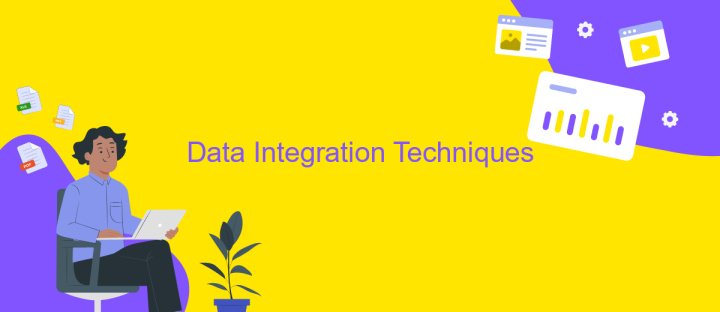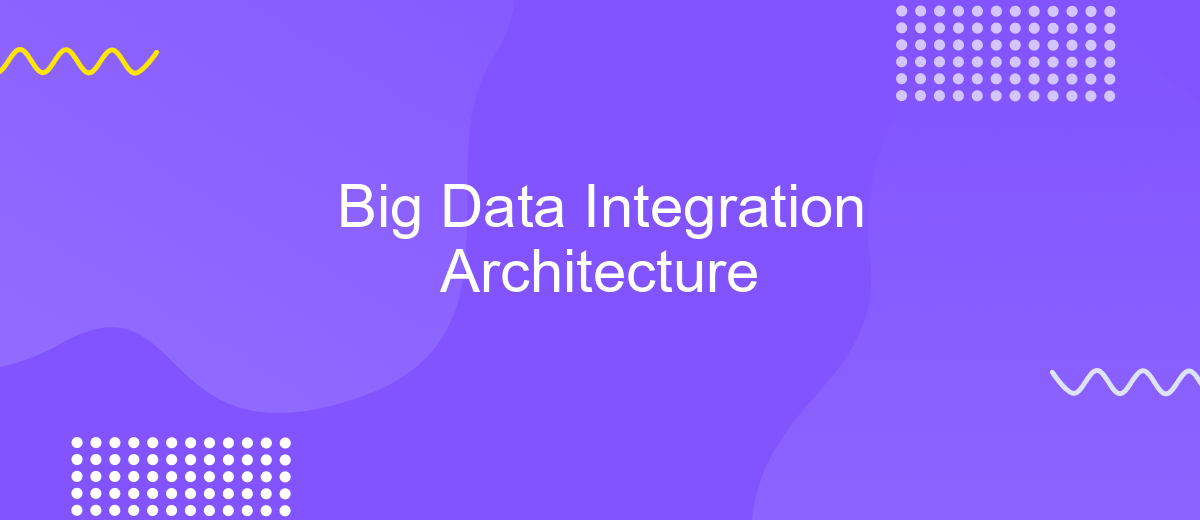Big Data Integration Architecture
Big Data Integration Architecture is a critical framework that enables the seamless combination of vast and varied data sources into a unified, analyzable format. It addresses the challenges of data silos, ensuring that organizations can derive actionable insights from their data. This article explores the key components, benefits, and best practices for implementing an effective big data integration architecture.
Introduction
The rapid expansion of data in today's digital age has led to the emergence of Big Data, necessitating robust and efficient integration architectures. Big Data Integration Architecture is a framework designed to manage, process, and analyze vast amounts of data from various sources. It ensures seamless data flow and enables organizations to derive valuable insights, driving informed decision-making and strategic planning.
- Data Ingestion: Collecting data from diverse sources such as databases, IoT devices, social media, and more.
- Data Storage: Utilizing scalable storage solutions like Hadoop, NoSQL databases, and cloud storage to handle large datasets.
- Data Processing: Employing tools such as Apache Spark, Flink, and Hadoop MapReduce to process and transform data efficiently.
- Data Integration: Combining data from multiple sources to provide a unified view, using ETL (Extract, Transform, Load) processes and data pipelines.
- Data Analysis: Leveraging advanced analytics, machine learning, and AI to extract actionable insights from integrated data.
Implementing a well-designed Big Data Integration Architecture is crucial for organizations aiming to harness the full potential of their data. It not only improves data accessibility and quality but also enhances operational efficiency and supports innovation. By integrating data effectively, businesses can stay competitive and responsive to market changes.
Data Sources and Formats

Big Data integration involves consolidating diverse data sources, each with unique formats and structures. Common data sources include relational databases, NoSQL databases, cloud storage, and web services. These sources produce data in various formats such as CSV, JSON, XML, and Avro. Effective integration requires a robust architecture capable of handling these disparate sources and formats seamlessly. Tools like ETL (Extract, Transform, Load) processes are essential for converting data into a unified format suitable for analysis.
To streamline the integration process, services like ApiX-Drive can be invaluable. ApiX-Drive offers a user-friendly platform for setting up integrations without the need for extensive coding. It supports a wide range of data sources and formats, making it easier to automate data flows between systems. By leveraging such services, organizations can ensure that their Big Data integration architecture is both scalable and efficient, enabling timely and accurate data-driven decision-making.
Data Integration Techniques

Data integration techniques are essential for combining data from various sources into a unified and coherent dataset. These techniques enable organizations to leverage diverse data streams, ensuring that the data is accurate, consistent, and readily available for analysis. Effective data integration not only enhances decision-making processes but also supports real-time analytics and operational efficiency.
- ETL (Extract, Transform, Load): This traditional method involves extracting data from different sources, transforming it into a suitable format, and loading it into a target database or data warehouse.
- ELT (Extract, Load, Transform): Similar to ETL, but the transformation occurs after loading the data into the target system, making it more suitable for handling large volumes of data.
- Data Virtualization: This technique allows data to be accessed and queried without requiring physical storage in a new location, providing a real-time view of integrated data.
- Data Replication: This method involves copying data from one location to another to ensure consistency and availability across multiple systems.
- API Integration: Using APIs to connect different systems and enable seamless data exchange and integration in real time.
Choosing the right data integration technique depends on the specific requirements and constraints of the organization. Factors such as data volume, latency, and the complexity of data sources play a critical role in determining the most suitable approach. By leveraging the appropriate techniques, organizations can ensure efficient and effective data integration, driving better insights and business outcomes.
Data Management and Governance

Effective data management and governance are crucial for the successful integration of big data. Proper management ensures that data is accurate, consistent, and accessible, while governance establishes the policies and procedures necessary to maintain data integrity and compliance. Together, these elements create a robust framework that supports the organization's data-driven decision-making processes.
Data management involves the systematic collection, storage, and retrieval of data. It encompasses various activities such as data cleansing, data integration, and data quality management. Governance, on the other hand, focuses on establishing clear guidelines and standards for data usage, security, and privacy.
- Data Quality: Ensuring data accuracy and consistency.
- Data Security: Protecting data from unauthorized access and breaches.
- Data Privacy: Complying with regulations to protect sensitive information.
- Data Lineage: Tracking data origins and transformations.
- Data Stewardship: Assigning roles and responsibilities for data management.
By implementing comprehensive data management and governance practices, organizations can maximize the value of their big data initiatives. This not only enhances operational efficiency but also builds trust with stakeholders by demonstrating a commitment to data integrity and security.
- Automate the work of an online store or landing
- Empower through integration
- Don't spend money on programmers and integrators
- Save time by automating routine tasks
Use Cases and Applications
Big Data Integration Architecture finds applications across various industries, from healthcare to finance. In healthcare, it enables the integration of patient data from multiple sources, providing a comprehensive view that aids in accurate diagnosis and personalized treatment plans. Financial institutions leverage big data integration to consolidate transaction data, detect fraud, and offer tailored financial services. Retailers use it to merge customer data from online and offline channels, enhancing customer experience through personalized marketing and optimized inventory management.
Another significant use case is in the realm of IoT, where big data integration helps in aggregating data from numerous connected devices, enabling real-time analytics and predictive maintenance. Services like ApiX-Drive facilitate these integrations by offering a seamless platform to connect disparate data sources without extensive coding, ensuring smooth data flow and efficient processing. This capability is crucial for businesses looking to harness the full potential of their data assets, driving innovation and operational efficiency.
FAQ
What is Big Data Integration Architecture?
Why is Big Data Integration important?
What are the key components of Big Data Integration Architecture?
How can I automate data integration processes?
What challenges might I face with Big Data Integration?
Time is the most valuable resource in today's business realities. By eliminating the routine from work processes, you will get more opportunities to implement the most daring plans and ideas. Choose – you can continue to waste time, money and nerves on inefficient solutions, or you can use ApiX-Drive, automating work processes and achieving results with minimal investment of money, effort and human resources.


